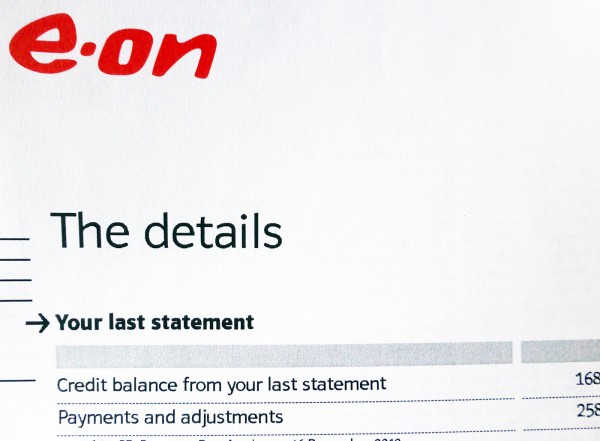 The French have elected Emmanuel Macron as their new President. He claims to be from the economic centre. But just what does this imply for his vision of how the French economy should be run? What policies is he likely to put in place? Can these policies rightly be described as ‘centrist’? In practice, some of his policies are advocated by the centre right and some by the centre left.
The French have elected Emmanuel Macron as their new President. He claims to be from the economic centre. But just what does this imply for his vision of how the French economy should be run? What policies is he likely to put in place? Can these policies rightly be described as ‘centrist’? In practice, some of his policies are advocated by the centre right and some by the centre left.
He wants to institute policies that are pro business and will have the effect of stimulating private investment, increasing productivity and resulting in faster economic growth.
His pro-business policies include: reducing corporation tax from its current 33.3% to 25%, the hope being that firms will invest the money that this will free up; reducing labour taxes on companies for employing low-wage workers; making the current 35-hour working week less rigid by giving firms greater ability to negotiate special arrangements with trade unions.
Other policies drawn from the centre right include reducing the size of the state. Currently, general government spending in France, at 56.5% of GDP, is the highest of the G7 countries. Italy’s is the next highest at 49.6%, followed by Germany at 44.3%, Canada at 40.8%, the UK at 39.4%, Japan at 36.8% and the USA at 35.2%. President Macron wants to reduce the figure for France to 52% over his five-year term.  This will be achieved by cutting 120,000 public-sector jobs and reducing state spending by €60bn. He plans, thereby, to reduce the general government deficit from its 2016 level of 3.4% of GDP to 1% by 2022 and reduce the general government debt from 96.0% of GDP to 93.2% over the same period.
This will be achieved by cutting 120,000 public-sector jobs and reducing state spending by €60bn. He plans, thereby, to reduce the general government deficit from its 2016 level of 3.4% of GDP to 1% by 2022 and reduce the general government debt from 96.0% of GDP to 93.2% over the same period.
Drawing from centre-left policies he plans to increase public investment by €50bn, including €15bn on training, €15bn on green energy and €5bn each on transport, health, agriculture and the modernisation of public administration. But as this additional expenditure is less than the planned savings through greater efficiency and as GDP is projected to grow, this is still consistent with achieving a reduction in the general government deficit as a percentage of GDP. He has also pledged to extend welfare spending. This will include making the self-employed eligibile for unemployment benefits.
M Macron isalso strongly supportive of France’s membership of the EU and the euro. Nevertheless he wants the EU to be reformed to make it more efficient and achieve significant cost savings.
Articles
Macronomy: What are Emmanuel Macron’s economic plans? BBC News, Simon Atkinson (8/5/17)
Factbox: Emmanuel Macron’s presidential election policies Reuters, Brian Love (14/4/17)
What Analysts Are Saying About Macron’s Victory Bloomberg, Chris Anstey (8/5/14)
The Main Points of Emmanuel Macron’s Economic Programme NDTV, India (9/5/14)
Can Emmanuel Macron solve France’s economic riddle? The Guardian, Larry Elliott (30/4/17)
Why Emmanuel Macron’s bid to haul France out of its economic malaise will be harder than he thinks The Telegraph, Szu Ping Chan and Tim Wallace (30/4/17)
Macron’s policies on Europe, trade, immigration and defence Financial Times, Hannah Murphy (7/5/17)
French presidential election: Investors, economists and strategists react to Macron’s victory Independent, Josie Cox (8/5/17)
Questions
- Compare the performance of the French, German and UK economies over the past 10 years.
- Why does France have much lower levels of inequality and much higher productivity than the UK?
- How would (a) a neoliberal and (b) Keynesian economist explain the slow growth performance of France?
- Give some other examples of centre-right economic policies that could be pursued by a centrist government.
- Give some other examples of centre-left economic policies that could be pursued by a centrist government.
- How do M Macron’s policies differ from those of the (a) Conservative, (b) Labour and (c) Liberal Democrat parties in the manifestos for the 2017 General Election in the UK?
- What economic difficulties is M Macron likely to find in carrying out his policies?
- Would you describe M Macron’s macroeconomic policies as demand-side or supply -side policies? Explain.
- What specific economic policies does France want Germany to pursue?
 Following concerns about the market power of the Big Six energy suppliers in the UK and high prices for gas and electricity, the industry regulator, Ofgem, referred the industry to the Competition and Markets Authority (CMA) in June 2014. The CMA published its final report in June 2016. This argued that while there was sufficient potential for competition, consumers nevertheless needed further encouragement to switch suppliers. This would strengthen competition in the market.
Following concerns about the market power of the Big Six energy suppliers in the UK and high prices for gas and electricity, the industry regulator, Ofgem, referred the industry to the Competition and Markets Authority (CMA) in June 2014. The CMA published its final report in June 2016. This argued that while there was sufficient potential for competition, consumers nevertheless needed further encouragement to switch suppliers. This would strengthen competition in the market.
To encourage switching, the CMA proposed the creation of a database that would include the details of customers who have been on a supplier’s standard variable tariff (SVT) for three or more years. Competitor energy suppliers would have access to this database to offer better deals for these customers.
There had already been calls for price caps to be imposed on suppliers. For example, in the run-up to the 2015 general election, the then Labour leader, Ed Miliband, proposed imposing a price freeze. This was criticised by the Conservatives for being too anti-market, that it would encourage energy companies to raise prices prior to the freeze and that it would be of no benefit in times of falling wholesale energy prices (which was the position in 2015).
 Indeed, in its 2016 report, the CMA recommended price caps only for the 16% of people on prepayment meters and these would be variable caps not freezes. This was followed in February 2017, by Ofgem’s announcement that a temporary price cap for such customers would come into effect in April 2017. The level of the cap would vary by meter type and region. It would also be reviewed every six months to reflect changes in costs and remain in place until 2020. There would be no cap on other customers.
Indeed, in its 2016 report, the CMA recommended price caps only for the 16% of people on prepayment meters and these would be variable caps not freezes. This was followed in February 2017, by Ofgem’s announcement that a temporary price cap for such customers would come into effect in April 2017. The level of the cap would vary by meter type and region. It would also be reviewed every six months to reflect changes in costs and remain in place until 2020. There would be no cap on other customers.
But in the run-up to the 2017 election, the Conservatives announced that they would, after all, introduce a price cap on SVTs – 66% of customers are on such tariffs. Before the details were announced, there was much speculation as to what form such a cap would take? It would not be a simple freeze. But there was debate as to whether caps would vary with wholesale costs or whether they would be relative to the company’s lowest tariffs or to those of its rivals.
As it turned out, the proposal was for a cap on standard variable tariffs. It would be set by Ofgem and reviewed every six months. The cap would be based on the cheapest standard variable tariffs in each part of the UK, taking into account the variable costs for transporting energy there. Ofgem will adjust the cap every six months to reflect changes in the wholesale cost of energy.
Articles before details were anniunced
U.K. Energy Industry Faults May’s Election Pledge to Cap Prices Bloomberg, Rakteem Katakey (23/4/17)
Conservatives promise to cap prices in UK energy market Financial Times, Jim Pickard and Nathalie Thomas (23/4/17)
How might an energy price cap work? BBC News, Brian Milligan (24/4/17)
UK government vows strong action to rein in energy companies The Guardian, Adam Vaughan (19/4/17)
Energy bills: what’s the difference between Tory cap and Miliband freeze? The Guardian, Adam Vaughan (23/4/17)
Capping energy prices? Still a bad idea Adam Smith Institute blogs, Sam Dumitriu (25/4/17)
Bulb becomes ‘first’ provider to cut energy prices this year Moneywise (24/4/17)
Experts slam Conservative plans to cap energy bills as ‘clumsy and counterproductive’ The Telegraph, Lauren Davidson (23/4/17)
Capping energy tariffs isn’t a one-way ticket to Venezuelan-style economic ruin Independent, Ben Chu (25/4/17)
Articles after details were anniunced
Conservatives defend plans to cap UK energy bills Financial Times, Jim Pickard and Nathalie Thomas (9/5/17)
What is the energy price cap – and what does it mean for bills? The Telegraph, Jillian Ambrose (9/5/17)
The new energy price cap con? The Telegraph, Jillian Ambrose (9/5/17)
May defends plan to cap ‘rip-off energy bills’ BBC News (9/5/17)
Q&A: The Tory plan to cap energy prices BBC News, Brian Milligan (9/5/17)
Energy prices could still go up under Theresa May’s price cap plans, admits Business Secretary Greg Clark Independent, Rob Merrick (9/5/17)
Tory claims over energy price cap are just hot air The Guardian, Nils Pratley (9/5/17)
Video and audio
 UK government energy price cap ‘sheer politics’: Bernstein CNBC, Deepa Venkateswaran and Andrew Sentance (25/4/17)
UK government energy price cap ‘sheer politics’: Bernstein CNBC, Deepa Venkateswaran and Andrew Sentance (25/4/17)
 Energy UK: price cap could backfire Sky News, Lawrence Slade (24/4/17)
Energy UK: price cap could backfire Sky News, Lawrence Slade (24/4/17)
 Scottish Power: Capping prices ‘damages customers’ BBC News, Keith Anderson (24/4/17)
Scottish Power: Capping prices ‘damages customers’ BBC News, Keith Anderson (24/4/17)
 Tories to pledge energy bill cap BBC News, Michael Fallon (24/4/17)
Tories to pledge energy bill cap BBC News, Michael Fallon (24/4/17)
 Tories: Energy cap will protect vulnerable people BBC Today Programme, Business Secretary Greg Clark (9/5/17)
Tories: Energy cap will protect vulnerable people BBC Today Programme, Business Secretary Greg Clark (9/5/17)
 Energy cap: good or bad for consumers? Sky News, Stephen Fitzpatrick and James Kirkup (9/5/17)
Energy cap: good or bad for consumers? Sky News, Stephen Fitzpatrick and James Kirkup (9/5/17)
Questions
- What scope is there for tacit collusion between the Big Six energy suppliers?
- What is meant by the RPI–X price cap? How does it differ from proposals being considered by the government?
- Why are people often reluctant to switch energy supplier?
- How could people be encouraged to switch supplier?
- What are the advantages and disadvantages of imposing a price cap for SVTs (a) relative to costs; (b) relative to lower-priced tariffs?
- Comment on Centrica’s chief executive officer Iain Conn’s statement that “price regulation will result in reduced competition and choice, and potentially impact customer service”.
- Comment on the statement by Lawrence Slade, chief executive officer of Energy UK, that intervention would create “huge uncertainty around government intentions, potentially putting at risk the billions in investment and jobs needed to renew our energy system”.
- Would an announcement of the introduction of a price cap in the near future necessarily encourage energy companies to raise their price now?
 According to the theory of the political business cycle, governments call elections at the point in the business cycle that gives them the greatest likelihood of winning. This is normally near the peak of the cycle, when the economic news is currently good but likely to get worse in the medium term. With fixed-term governments, this makes it harder for governments as, unless they are lucky, they have to use demand management policies to engineer a boom as an election approaches. It is much easier if they can choose when to call an election.
According to the theory of the political business cycle, governments call elections at the point in the business cycle that gives them the greatest likelihood of winning. This is normally near the peak of the cycle, when the economic news is currently good but likely to get worse in the medium term. With fixed-term governments, this makes it harder for governments as, unless they are lucky, they have to use demand management policies to engineer a boom as an election approaches. It is much easier if they can choose when to call an election.
In the UK, under the Fixed-term Parliaments Act of 2011, the next election must be five years after the previous one. This means that the next election in the UK must be the first Thursday in May 2020. The only exception is if at least two-thirds of all MPs vote for a motion ‘That there shall be an early parliamentary general election’ or ‘That this House has no confidence in Her Majesty’s Government.’
The former motion was put in the House of Commons on 19 April and was carried by 522 votes to 13 – considerably more than two-thirds of the 650 seats in Parliament. The next election will therefore take place on the government’s chosen date of 8 June 2017.
Part of the reason for the government calling an election is to give it a stronger mandate for its Brexit negotiations. Part is to take advantage of its currently strong opinion poll ratings, which, if correct, will mean that it will gain a substantially larger majority. But part could be to take advantage of the current state of the business cycle.
Although the economy is currently growing quite strongly (1.9% in 2016) and although forecasts for economic growth this year are around 2%, buoyed partly by a strongly growing world economy, beyond that things look less good. Indeed, there are a number of headwinds facing the economy.
 First there are the Brexit negotiations, which are likely to prove long and difficult and could damage confidence in the economy. There may be adverse effects on both inward and domestic investment and possible increased capital outflows. At the press conference to the Bank of England’s February 2017 Inflation Report, the governor stated that “investment is expected to be around a quarter lower in three years’ time than projected prior to the referendum, with material consequences for productivity, wages and incomes”.
First there are the Brexit negotiations, which are likely to prove long and difficult and could damage confidence in the economy. There may be adverse effects on both inward and domestic investment and possible increased capital outflows. At the press conference to the Bank of England’s February 2017 Inflation Report, the governor stated that “investment is expected to be around a quarter lower in three years’ time than projected prior to the referendum, with material consequences for productivity, wages and incomes”.
Second, the fall in the sterling exchange rate is putting upward pressure on inflation. The Bank of England forecasts that CPI inflation will peak at around 2.8% in early 2018. With nominal real wages lagging behind prices, real wages are falling and will continue to do so. As well as from putting downward pressure on living standards, it will tend to reduce consumption and the rate of economic growth.
 Consumer debt has been rising rapidly in recent months, with credit-card debt reaching an 11-year high in February. This has helped to support growth. However, with falling real incomes, a lack of confidence may encourage people to cut back on new borrowing and hence on spending. What is more, concerns about the unsustainability of some consumer debt has encouraged the FCA (the financial sector regulator) to review the whole consumer credit industry. In addition, many banks are tightening up on their criteria for granting credit.
Consumer debt has been rising rapidly in recent months, with credit-card debt reaching an 11-year high in February. This has helped to support growth. However, with falling real incomes, a lack of confidence may encourage people to cut back on new borrowing and hence on spending. What is more, concerns about the unsustainability of some consumer debt has encouraged the FCA (the financial sector regulator) to review the whole consumer credit industry. In addition, many banks are tightening up on their criteria for granting credit.
Retail spending, although rising in February itself, fell in the three months to February – the largest fall for nearly seven years. Such falls are likely to continue.
So if the current boom in the economy will soon end, then, according to political business cycle theory, the government is right to have called a snap election.
Articles
Gloomy economic outlook is why Theresa May was forced to call a snap election The Conversation, Richard Murphy (18/4/17)
What does Theresa May’s general election U-turn mean for the economy? Independent, Ben Chu (18/4/17)
It’s not the economy, stupid – is it? BBC News Scotland, Douglas Fraser (18/4/17)
Biggest fall in UK retail sales in seven years BBC News (21/4/17)
Sharp drop in UK retail sales blamed on higher prices Financial Times, Gavin Jackson (21/4/17)
Shoppers cut back as inflation kicks in – and top Bank of England official says it will get worse The Telegraph, Tim Wallace Szu Ping Chan (21/4/17)
Retail sales volumes fall at fastest quarterly rate in seven years Independent, Ben Chu (21/4/17)
Statistical Bulletin
Retail sales in Great Britain: Mar 2017 ONS (21/4/17)
Questions
- For what reasons might economic growth in the UK slow over the next two to three years?
- For what reasons might economic growth increase over the next two to three years?
- Why is forecasting UK economic growth particularly difficult at the present time?
- What does political business cycle theory predict about the behaviour of governments (a) with fixed terms between elections; (b) if they can choose when to call an election?
- How well timed is the government’s decision to call an election?
- If retail sales are falling, what other element(s) of aggregate demand may support economic growth in the coming months?
- How does UK productivity compare with that in other developed countries? Explain why.
- What possible trading arrangements with the EU could the UK have in a post-Brexit deal? Discuss their likelihood and their impact on economic growth?
 Guest post by Hazel Garcia from InvestmentZen
Guest post by Hazel Garcia from InvestmentZen
 An oft-repeated quote is that money can’t buy happiness. But according to multiple studies, yes, it can. The key is what you spend that hard earned cash on. When researchers asked individuals to reflect on their recent purchases, those who had made experiential purchases i.e. trips, lessons, events, etc. were much happier compared to those who had made material purchases.
An oft-repeated quote is that money can’t buy happiness. But according to multiple studies, yes, it can. The key is what you spend that hard earned cash on. When researchers asked individuals to reflect on their recent purchases, those who had made experiential purchases i.e. trips, lessons, events, etc. were much happier compared to those who had made material purchases.
Why is this the case? According to a 20 year study at Cornell, our excitement from new purchases fades quickly over time. That new watch you bought quickly becomes a part of your everyday life. This is what psychologists call the “hedonic treadmill,” which describes the way we return to our normal state of happiness after a momentous occasion. However, buying a new chair will return you much quicker to that state than an adventure across the Rocky Mountains.
Researchers identified several key reasons why this is the case. One reason is that an object is just an object and can never become a part of your identity (at least, not a healthy one),  whereas experiences shape us over time. In addition, because by definition unique experiences are only short-lived, we don’t adapt to them the way we might with a new phone or watch. They do not become part of the routine and as such are usually viewed in a special light.
whereas experiences shape us over time. In addition, because by definition unique experiences are only short-lived, we don’t adapt to them the way we might with a new phone or watch. They do not become part of the routine and as such are usually viewed in a special light.
Interestingly, researchers found that even a negative experience could be rated more highly than purchasing a luxury good. In the study, participants were asked to describe a bad experience they had recently and a few weeks later, they were asked again about it. Over the course of just a few weeks, most people’s opinion of that moment had changed.
This is because the human brain has a tendency to reduce the impact of stressful situations. In fact, a significant portion of those polled even stated that in the end, they were happy to have had the negative encounter as it gave them a fresh way to look at things. When similar questions were asked to those who had purchased a high-end item, their levels of happiness were consistently lower as time went on.
So when it comes to the age old question of “Does money buy happiness?” the answer is a resounding yes – provided you spend it on the right things. But of course, you should still aim to make every dollar go as far as possible in pursuit of great experiences. Take a look at the infographic below to see a visual summary of the research on money and how it can buy happiness.

Blog
References
Questions (by JS)
- Why does buying material goods not buy happiness? Does this apply to all material goods?
- What is different, in terms of happiness, about buying experiences? Does this apply to the consumption of all services?
- Is the consumption of experiences subject to diminishing marginal utility (a) for specific experiences; (b) for experiences in general? Explain.
- Why do we seem not to care as much about the “Jones'” vacation as about their income or possession of material goods?
 The US Federal Reserve, like many other central banks, engaged in massive quantitative easing in the wake of the financial crisis of 2007/8. Over three rounds, QE1, QE2 and QE3, it accumulated $4.5 trillion of assets – mainly government bonds and mortgage-backed securities (see chart below: click here for a PowerPoint). But, unlike its counterparts in the UK, the eurozone and Japan, it has long ceased its programme of asset purchases.. In October 2014, it announced that QE was at an end. All that would be done in future would be to replace existing holdings of assets as they matured, keeping total holdings roughly constant.
The US Federal Reserve, like many other central banks, engaged in massive quantitative easing in the wake of the financial crisis of 2007/8. Over three rounds, QE1, QE2 and QE3, it accumulated $4.5 trillion of assets – mainly government bonds and mortgage-backed securities (see chart below: click here for a PowerPoint). But, unlike its counterparts in the UK, the eurozone and Japan, it has long ceased its programme of asset purchases.. In October 2014, it announced that QE was at an end. All that would be done in future would be to replace existing holdings of assets as they matured, keeping total holdings roughly constant.
But now this policy is set to change. The Fed is about to embark on a programme of ‘quantitative tightening’, already being dubbed ‘QT’. This involves the Fed reducing its holdings of assets, mainly government bonds and government-backed mortgage-related securities.
 This, however, for the time being will not include selling its holding of bonds or mortgage-backed securities. Rather, it will simply mean not buying new assets to replace ones when they mature, or only replacing part of the them. This was discussed by the 75 participants at the joint meeting of the Federal Open Market Committee (FOMC) and Board of Governors on 14–15 March.
This, however, for the time being will not include selling its holding of bonds or mortgage-backed securities. Rather, it will simply mean not buying new assets to replace ones when they mature, or only replacing part of the them. This was discussed by the 75 participants at the joint meeting of the Federal Open Market Committee (FOMC) and Board of Governors on 14–15 March.
As the minutes put it: “Many participants emphasized that reducing the size of the balance sheet should be conducted in a passive and predictable manner.”
A more active form of QT would involve selling assets before maturity and thus reducing the size of the Fed’s balance sheet more rapidly. But either way, reducing assets would put downward pressure on the money supply and support the higher interest rates planned by the FOMC.
The question is whether there is enough liquidity elsewhere in the system and enough demand for credit, and willingness of the banking system to supply credit, to allow a sufficient growth in broad money – sufficient, that is, to support continued growth in the economy. The answer to that question depends on confidence. The Fed, not surprisingly, is keen not to damage confidence and hence prefers a gradualist approach to reducing its holdings of assets bought during the various rounds of quantitative easing.
Articles
Fed’s asset shift to pose new test of economy’s recovery, resilience Reuters, Howard Schneider and Richard Leong (6/4/17)
Federal Reserve likely to begin cutting back $4.5 trillion balance sheet this year Washington Post, Ana Swanson (5/4/17)
Why the Fed’s debate about shrinking its balance sheet really, really matters Money Observer, Russ Mould (7/4/17)
The Fed and ECB keep a cautious eye on the exit Financial Times (7/4/17)
Get ready for the Fed’s next scary policy change CBS Money Watch, Anthony Mirhaydari (5/4/17)
The Fed wants to start shrinking its $4.5 trillion balance sheet later this year Business Insider, Akin Oyedele (5/4/17)
Inside the Fed’s March Meeting: The Annotated Minutes Bloomberg, Luke Kawa, Matthew Boesler and Alex Harris (5/4/17)
QE was great for asset prices – will ‘QT’ smash them? The Financial Review (Australia), Patrick Commins (7/4/17)
Shrinking the Fed’s balance sheet Brookings, Ben Bernanke (26/1/17)
Data
Selected data Board of Governors of the Federal Reserve System
Questions
- Distinguish between active and passive QT.
- If QE is a form of expansionary monetary policy, is QT a form of contractionary monetary policy?
- Could QT take place alongside an expansion of broad money?
- What dangers lie in the Fed scaling back its holdings of government (Treasury) bonds and mortgage-backed securities?
- Why is it unlikely that the Fed will reduce its holdings of securities to pre-crisis levels?
- Why are the Bank of England, the ECB and the Bank of Japan still pursuing a policy of QE?
- What are the implications for exchange rates of QT in the USA and QE elsewhere?
- Find out data for the monetary base, for narrow money (M1) and broader money (M2) in the USA. Are narrow and/or broad money correlated with Federal Reserve asset holdings?
 The French have elected Emmanuel Macron as their new President. He claims to be from the economic centre. But just what does this imply for his vision of how the French economy should be run? What policies is he likely to put in place? Can these policies rightly be described as ‘centrist’? In practice, some of his policies are advocated by the centre right and some by the centre left.
The French have elected Emmanuel Macron as their new President. He claims to be from the economic centre. But just what does this imply for his vision of how the French economy should be run? What policies is he likely to put in place? Can these policies rightly be described as ‘centrist’? In practice, some of his policies are advocated by the centre right and some by the centre left. This will be achieved by cutting 120,000 public-sector jobs and reducing state spending by €60bn. He plans, thereby, to reduce the general government deficit from its 2016 level of 3.4% of GDP to 1% by 2022 and reduce the general government debt from 96.0% of GDP to 93.2% over the same period.
This will be achieved by cutting 120,000 public-sector jobs and reducing state spending by €60bn. He plans, thereby, to reduce the general government deficit from its 2016 level of 3.4% of GDP to 1% by 2022 and reduce the general government debt from 96.0% of GDP to 93.2% over the same period. 














